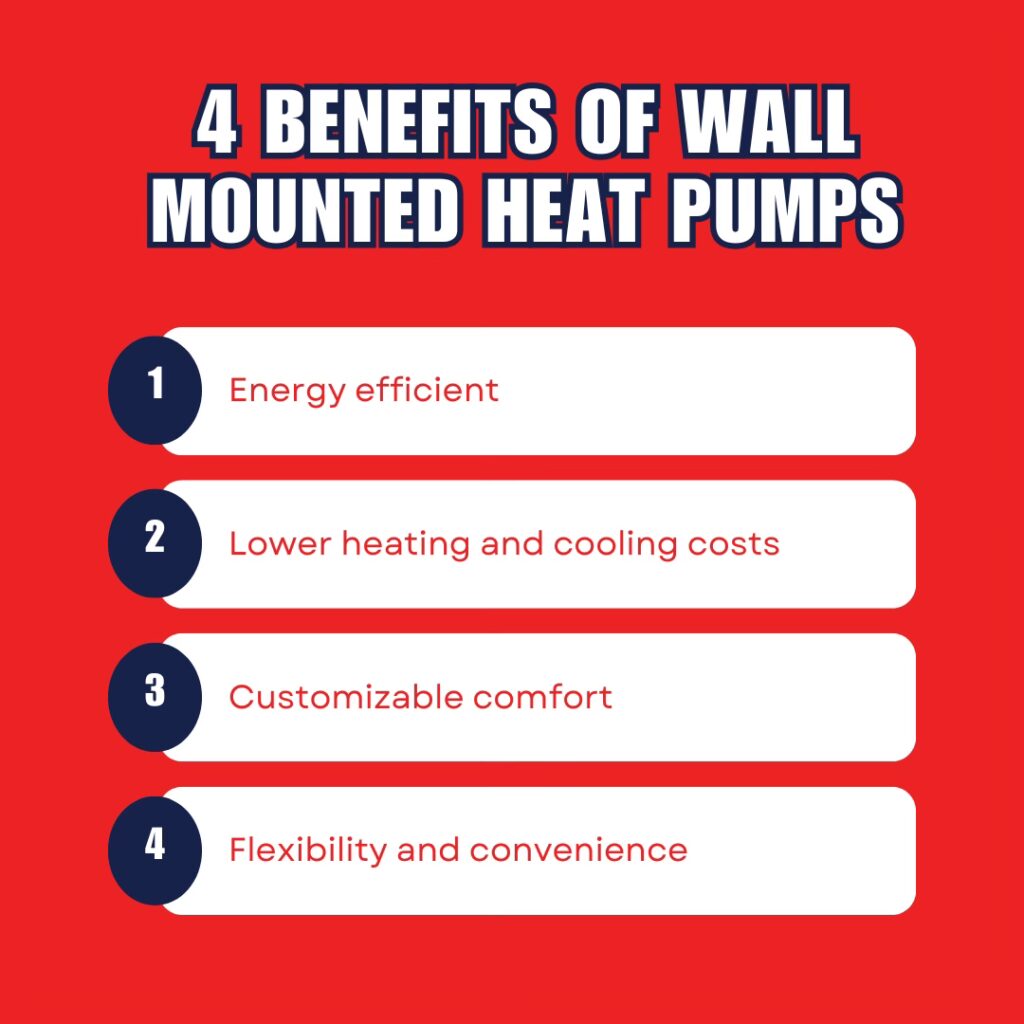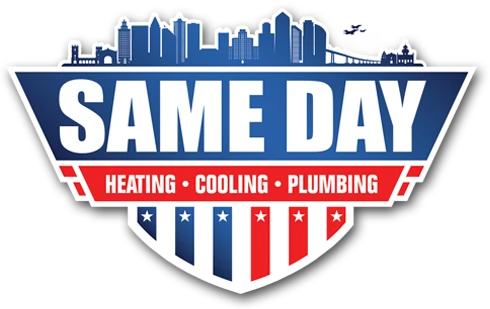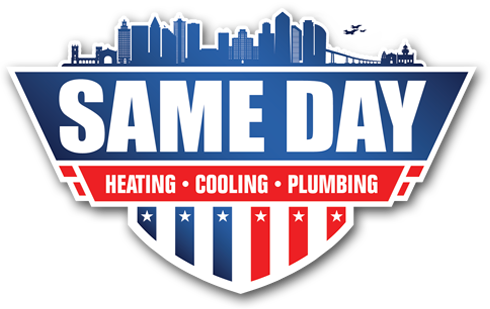How Does A Wall Mounted Heat Pump Work?
Quick Summary: This blog explains how wall-mounted heat pumps offer energy-efficient, year-round heating and cooling without the need for ductwork. It covers the components, operation, and benefits of these systems, which use a heat transfer process to provide comfort in both summer and winter. Wall-mounted heat pumps are highly efficient, helping reduce heating and cooling costs, while offering customizable comfort for different rooms. The article also highlights the flexibility, convenience, and long-term savings that make these systems an attractive option for homeowners seeking to improve energy efficiency and indoor climate control.
As energy-efficient home heating and cooling solutions gain popularity, wall-mounted heat pumps have emerged as one of the most effective options for maintaining a comfortable indoor environment. Known for their versatility and efficiency, wall-mounted heat pumps offer year-round comfort by heating in the winter and cooling in the summer. But how exactly does this innovative system work? In this article, we’ll break down the components, process, and benefits of wall-mounted heat pumps.
What Is a Wall-Mounted Heat Pump?
A wall-mounted heat pump is a type of ductless system that provides both heating and cooling without the need for traditional ductwork. Unlike central heat pumps, these systems consist of two main components: the indoor unit (often mounted on an interior wall) and the outdoor unit, also known as the outdoor condenser.
Wall-mounted systems are a popular choice for homeowners looking to upgrade their heating and cooling systems without the hassle of installing new ducts or using inefficient window units. Additionally, these systems offer customizable comfort, as individual rooms can have their own temperature controls, which is a significant advantage over conventional air conditioners.
Components of a Wall-Mounted Heat Pump
To understand how a wall-mounted heat pump works, it’s essential to know its key components:
- Outdoor Unit: This is the part of the system located outside your home. It contains the compressor, which circulates refrigerant between the indoor and outdoor units, facilitating the heat transfer cycle.
- Indoor Unit (Wall-Mounted Indoor Unit): Mounted on an interior wall, the indoor unit contains an indoor evaporator, fan, and other components that distribute either warm or cool air throughout the room.
- Refrigerant Lines: These lines run between the indoor unit and the outdoor condenser, carrying refrigerant that absorbs and releases heat, depending on the system’s mode (heating or cooling).
- Remote Controls: Most ductless mini-split heat pumps come with remote controls or smart device connectivity, allowing users to easily adjust the temperature, fan speed, and mode (heating or cooling) for their individual wall-mounted units.
The Heat Transfer Cycle: Heating and Cooling Process
A wall-mounted heat pump operates by transferring heat rather than generating it, making it much more energy efficient than traditional electric heating or air conditioners. The process of moving heat from one place to another is what makes this technology so versatile for both heating and cooling.
Cooling Mode
In cooling mode, a wall-mounted ductless unit works similarly to a standard air conditioner. Here’s a breakdown of the process:
- Heat Absorption: Warm air from the room is pulled into the indoor unit by a fan. The air passes over the indoor evaporator coils, which are filled with cold refrigerant.
- Heat Transfer: The refrigerant absorbs the heat from the air, cooling the air down.
- Heat Release: The refrigerant, now carrying the absorbed heat, flows to the outdoor unit, where the compressor pumps the refrigerant to high pressure, causing it to release the absorbed heat to the outside environment.
- Cooling the Air: The now-cooled refrigerant flows back into the indoor unit, ready to repeat the cycle, continuously cooling the indoor air.
Heating Mode
In heating mode, the wall-mounted heat pump reverses this cycle to bring heat inside:
- Heat Absorption: Even in cold weather, the outdoor unit can extract heat from the outside air. The refrigerant absorbs this heat and is pumped to the indoor unit.
- Heat Transfer: The heat-carrying refrigerant moves through the refrigerant lines to the wall-mounted indoor unit, where it passes over the indoor evaporator.
- Heat Release: The fan in the indoor unit blows air over the warm refrigerant coils, distributing heated air into the room.
This heating process can continue even in relatively cold outdoor temperatures, making ductless heat pumps an excellent solution for year-round comfort.

Benefits of Wall-Mounted Heat Pumps
The advantages of wall-mounted heat pumps are numerous, making them a popular choice for homeowners who want to improve their home’s comfort and efficiency without the cost and disruption of installing ducts.
Energy Efficiency
One of the most significant benefits of wall-mounted ductless units is their energy efficiency. By transferring heat instead of generating it, these systems can heat or cool a space using significantly less energy than traditional systems. Many models also come with an Energy Star rating, which ensures they meet strict guidelines for energy performance.
Lower Heating and Cooling Costs
Because of their efficiency, wall-mounted heat pumps can help homeowners reduce their energy consumption and lower their utility bills. Compared to electric heating systems, these units can save homeowners up to 50% on their heating costs. Similarly, in the summer, they use less energy than conventional air conditioners, further reducing energy bills.
Customizable Comfort
With ductless mini-split heat pumps, each room can have its own wall-mounted indoor unit, allowing for customizable comfort. This means that different areas of the house can be set to different temperatures, eliminating the need to heat or cool rooms that aren’t in use.
Flexibility and Convenience
Since wall-mounted units don’t require ducts, they are easier and more affordable to install than central heat pumps. They’re ideal for older homes that don’t have ductwork or for additions and renovations where extending existing ducts would be cost-prohibitive. Additionally, their sleek design and ability to be mounted on exterior walls make them a more attractive and less obtrusive option compared to bulky window units.
Upfront Costs vs. Long-Term Savings
While the upfront cost of a wall-mounted heat pump system may be higher than a traditional window unit or portable air conditioner, the long-term savings on utility bills can more than offset the initial investment. With lower energy consumption and reduced heating costs, wall-mounted heat pumps offer excellent value over time, particularly for those who prioritize energy efficiency and comfort control.
For homeowners looking to reduce heating costs, improve energy efficiency, and enjoy customizable comfort throughout the year, a wall-mounted heat pump is an excellent choice. Offering an efficient and flexible alternative to traditional units and air conditioners, these systems are designed to provide year-round comfort with minimal energy consumption. Whether cooling your home in the summer or heating it in the winter, a wall-mounted heat pump delivers both comfort and savings.
Contact Same Day today for any of your heat pump needs! Our certified experts are always happy to help!

